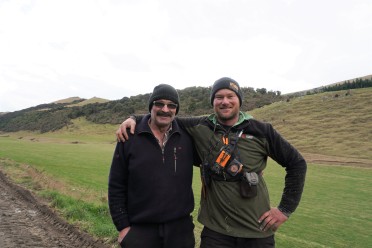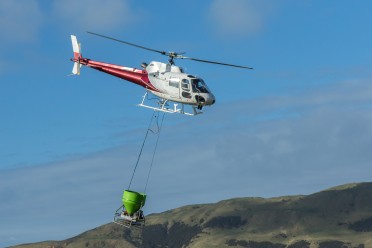 OSPRI committee member steps down after 33 years
OSPRI committee member steps down after 33 years
After 33 years on the Otago OSPRI Committee, Peter McNab has decided to step down.
Peter has been heavily involved with the TBfree Programme in the Otago region and was a key driver when bovine TB was present in many herds in the late 80’s and early 90’s. His experience will be missed.
We spoke to Peter about his time on the OSPRI committee and the keys to success on his journey to TB freedom.
Peter has been heavily involved with the TBfree Programme in the Otago region and was a key driver when bovine TB was present in many herds in the late 80’s and early 90’s. His experience will be missed.
We spoke to Peter about his time on the OSPRI committee and the keys to success on his journey to TB freedom.
TB slaughter levy changes due to market conditions
An annual review of TB differential slaughter levy rates for beef and dairy cattle has delivered levy updates as part of this year’s TBfree programme.
The TB differential slaughter levy is collected to support funding of the TBfree programme on behalf of beef and dairy industries, and the funding shares may change annually based on shifts in the relative size and value of each industry.
Each year the levy rates are reviewed under the TBfree Funders Agreement to ensure overall funding of the TBfree programme aligns with the agreed funding levels. Levies are adjusted to reflect the latest industry farm gate values and slaughter volumes for both dairy and beef stock.
From 1 October 2022 the new differential slaughter levy rates are:
- Dairy slaughter levy for dairy cattle changes from $9.00 per head to $10.50 per head
- Cattle slaughter levy for beef animals remains unchanged at $5.50 per head
- Live export levy remains unchanged at $11.50.
Improve biosecurity by using MyOSPRI to record sheep mob movements
Sheep farmers can help improve the accuracy and usability of data a biosecurity response team will need during an outbreak, by signing up to MyOSPRI. This is our new online customer portal, which has replaced the electronic Animal Status Declaration (eASD) system.
Sheep farmers can provide mob-level tracing by using MyOSPRI to:
- register their farm locations and pick-up addresses
- send online farm-to-farm and farm-to-meat processor ASDs (paper ASDs are still required for saleyards).
Paper-based ASDs aren’t collated in a centralised database, which means it’s harder to access them quickly to help trace disease.
Using MyOSPRI to send ASDs to other farms
Did you know that you can use MyOSPRI to send electronic Animal Status Declarations (ASDs) to other farmers, as well as sending livestock to slaughter?
 National Aerial Operations Plan 2023 — submissions due soon
National Aerial Operations Plan 2023 — submissions due soon
At the beginning of August we invited feedback on our 2023 national plan for TBfree aerial pest control operations.
The plan and feedback document outline the proposed aerial 1080 pest control operations for 2023. The feedback period ends 30 September 2022.
You will see in the submission form that we are asking for feedback on the boundaries, timing and nature of the proposed aerial operations.
There are a number of ways to make a submission, including an online submission form – or, if you would like to meet to discuss, please contact us.
We believe that it is important to undertake effective and timely consultation. This will provide an opportunity for people and organisations interested in, or affected by, our pest control operations including landowners, farmers, hunters and recreational land users to discuss any concerns they may have regarding the proposed operations.
If you have any immediate questions or comments please contact consultation@ospri.co.nz.
We encourage you to share this with relevant or other interested stakeholders.

